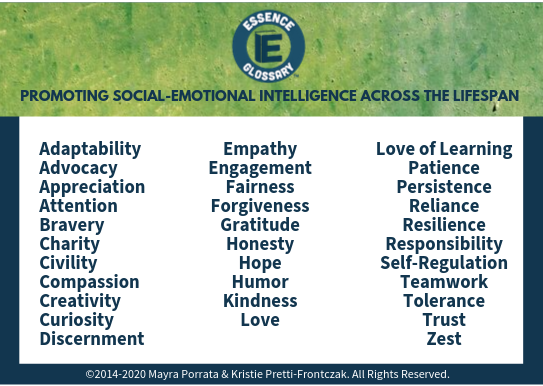 How often do you notice what has your attention?
How often do you notice what has your attention?
In particular, what has your attention when you are assessing children? For example, when you are completing a statewide assessment, or collecting day-to-day data…what has your attention?
Listen to this blog or skip over and keep reading.
Is it whether or not children know their colors? Can count? Can rhyme? How about if they show empathy, are able to self-regulate, or have a zest for life?
If “what we give our attention to, grows,” and we know that what is on our assessment protocols gets our attention, then we need to be sure our assessments focus on things that will help children grow and thrive in school and in life. Unfortunately, my research, of 100s of early childhood assessments, suggests attention isn’t always where it should be…
Not sure what I mean?
Take a look at an assessment you are required to complete.
Maybe it is something your state made in a “race to nowhere,” maybe it’s part of a package used in preschool because the rest of the district has bought into a certain publisher, or maybe in a less cynical way, it is something that you and your team created and feels pretty good about.
Regardless of the source or developer, as you look at the items contained in the assessment, what is your impression?
- Are these things you value?
- Are these things critical for children to thrive in school AND in life?
- Is anything missing?
- Are there “hard-to-reach” skills (aka hard to measure skills)
This examination is designed to help you determine if there is disconnect between what we focus on and what matters most.
If you find that your assessment directs your attention to the wrong things, or at least, your assessment is missing several things you want children to know and do, one solution is to shift attention. By this I mean shift the focus from the discrete items on the assessment, and find ways to attend to the things that really matter.
A first step, in shifting attention, is becoming aware of what really matters.
Needs some help shifting or knowing what to focus on?
Not a problem!
My colleague, Mayra Porrata and I have developed what we fondly call the “real” common core, or more formally, the Essence Glossary™.
This glossary contains 32 attributes or features that are an inherent part of each of us…characteristics which underlie our emotional intelligence. The glossary itself, provides both a common language and a simple approach to understanding and supporting the growth and development of all children.
Now, before you tell me there are not enough hours in a day to add more items to what you currently have to assess…take a look at our glossary (image below) and see if (1) you agree that these attributes matter, and (2) you can easily attend to the attributes during everyday activities.
At this point, if I’ve got your attention, you may be wondering how…how do I assess “zest” or “compassion”…
It’s actually quite easy…you assess the same way as you would assess printing the letter “m” or counting sets of objects.
- Start by defining the attribute (use our glossary and then “google” the term) – Download the glossary here!
- Next, consider verbal and nonverbal expressions of the attribute.
- Lastly, generate clear examples of what it would look like when children have opportunities to demonstrate the attribute.
Here’s an example using the attribute of self-regulation:
- Start by defining self-regulation using the Essence Glossary™: “showing discretion in one’s thoughts, emotions, and actions.” You can also search the literature. For example, Drs. McClelland and Tominey define self-regulation as “The conscious control of thoughts, behaviors, and emotions…the ability to stop, think, and then act.”
- Next, create a list of examples of verbal and nonverbal expressions of self-regulation. Here’s my partial list:
- making plans before taking action
- solving problems
- taking the perspective of others
- getting-keeping-shifting attention
- delaying gratification
- ignoring distractions
- adapting to change
- moving and acting deliberately
- considering alternatives
- recalling information
- following directions.
- Lastly, assess children during a variety of daily activities and experiences:
• When transitioning from circle to centers, determine if children are able to draw or tell where they are going to play, and what they are going to do when they get there.
• Across the daily routine, watch to see if children demonstrate different levels of activity; for example, quick and loud when playing outside, still and quiet when listening to a story.
• Ask children to sit on their hands or take a deep breath before raising their hand to be called upon or blurting out a response.
• When counting sets of objects see if children can alternate between counting numbers loudly and softly.
• When common classroom objects have been removed, see if children can figure out what is missing.
Doable?
Keep in mind, assessment doesn’t have to do with testing whether or not a child has or can perform a given skill. Authentic assessment has to do with sitting beside, getting to know, and keeping our attention on what matters…what we want to grow.

